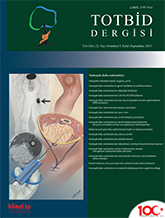
Whole body imaging is required in soft tissue sarcomas for initial staging, assessment of chemotherapy response, and surveillance for relapse and metastases. Whole body magnetic resonance imaging (MRI) is a valuable diagnostic method in this manner because it has a high soft tissue resolution and a high effectiveness for detecting bone metastases, it is possible to assess the primary tumor in detail at the same session, it can provide anatomical detail for any detected metastasis so that no other diagnostic study is needed in case of any need for surgery, it can provide functional images for assessment of treatment response and it doesn`t use ionizing radiation. Myxoid liposarcoma, which somewhat differs from other soft tissue sarcomas clinically, is not FDG-avid so whole body MRI is especially recommended for this sarcoma subtype instead of positron emission tomography - computed tomography (PET-CT). Whole body MRI is safer than PET-CT because of its lack of ionizing radiation, and this is even more important in children and cancer predisposition syndromes, such as Li-Fraumeni syndrome. The duration of whole body MRI, which uses a moving table and special coils, is around 45 minutes-one hour when used in the setting of soft tissue sarcoma. At least two anatomical sequences (such as STIR and T1 post-contrast VIBE) and a functional sequence (diffusion weighted MRI -DWI) is used, which provide a high sensitivity and specificity for detection of soft tissue and bone tumors.